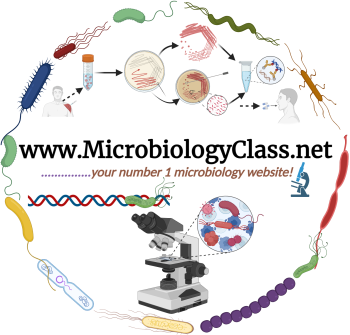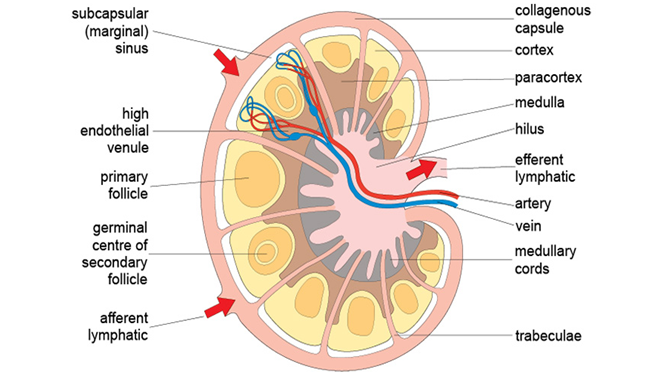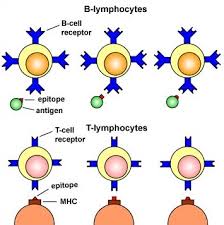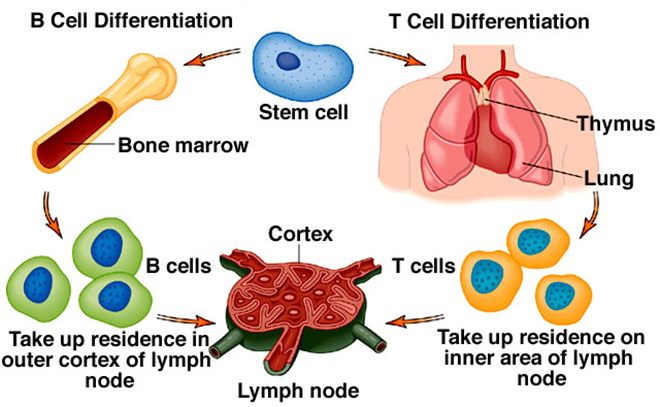However antigenic a foreign molecule/substance may be, to be immunogenic and qualify to be called an actual antigen to the extent of eliciting the host’s immune system to mount a specific immune response or attack, antigens must meet certain criteria that actually make them eligible immunogens (i.e. B cell and T cell activators).
The immune system of animals actually recognizes microbes and their products as immunogens ever before it can protect the host from infectious diseases that they cause. When an antibody recognizes and binds to a specific site (usually the epitope) on the antigen, and antigen-antibody complex is formed, and this phenomenon leads to the destruction of the immunogen (Figure 1). The characteristics of antigens that determine their immunogenicity are as follows:
EPITOPES (ANTIGENIC DETERMINANTS)
Epitope is the discrete site on the structure of an immunogen that is recognized by an antibody. It is those areas on the surface of an immunogen that stimulate specific immune response in a host. Epitopes are the recognition and binding sites of an antigen that bind to antigen-specific receptors or secreted antibodies.
Antigens bind to antibodies with the help of some intercellular forces such as Van der waals forces, hydrogen bonds and hydrophobic or electrostatic forces. Antibodies that fit and bind closely with antigens without dissociation are said to have high affinity.
Affinity is the binding strength between a single receptor site on an antibody and a single epitope on an antigen. It is simply the strength of binding of an immunogen to an antibody. The overall strength of binding or interaction between an immunogen with many epitopes and a polyvalent antibody (e.g. IgM) is known as avidity.
Immunogens with multiple antigenic determinants are generally known to elicit various types of antibodies as well. As immunologically active regions, an antigen or immunogen can have many different antigenic determinants (epitopes) which are specifically recognized by both the B cells and T cells. Most immunogens are proteins in nature, and thus exist as a folded, three-dimensional tertiary structure that consists of amino acid clusters containing a number of antigenic determinants to which antibodies bind to.
A particular microorganism can have several epitopes to which antibody binds. For example, on the surface of a bacterium are found cell wall (O) antigen, capsular (vi) antigen, flagella (H) antigen, and a host of other antigenic sites that antibodies binds to specifically.

MOLECULAR WEIGHT/SIZE
The molecular size or weight of a microorganism or an immunogen is important in determining the molecules immunogenicity. For a foreign substance to be immunogenic, it must be of certain molecular size that is capable of eliciting an immunological response. Usually, antigens less than 10,000 Daltons in their molecular weight are said to be weakly immunogenic. Immunogens have molecular weight that is above 10,000 Daltons. Non-immunogenic substances such as amino acids are of a molecular size lesser than 1000 Daltons.
FOREIGNNESS
Foreignness is the first and most important characteristic of an antigen becausefor any substance to be regarded as an immunogen it must first be genetically foreign to the host cells. The immune system of a host must first recognize a substance as non-self upon entry into the body for it to spark an immune response.
However, the greater the phylogenetic difference between the non-self and self-molecules, the greater the structural difference between them and the greater the degree of its foreignness too. Self or host molecules are generally non-immunogenic while non-self-molecules are recognized as antigens and are immunogenic.
Though the human immune system professionally discriminates between self and non-self-molecules, it must be understood that in some physiological state of the body, some self-molecules may be seen as non-self-molecules and this can lead to a disease conditions known as autoimmune disease.
CHEMICAL COMPOSITION AND HETEROGENEITY
The chemical makeup and heterogeneity or complexity of a foreign substance is essential to that antigen’s immunogenicity. To be considered an immunogen, antigens must attain some level of structural complexity i.e. they must be made up of different components instead of being composed of only just one part. The complexity and conformation of an immunogen are determined by both the physical and chemical properties of the molecule.
Monomeric/homopolymer protein molecules (i.e. protein molecules with only one composition) are less immunogenic than polymeric/heteropolymer proteins consisting of the primary, secondary, tertiary and quaternary structures of a protein molecule. Thus, antigens become better immunogens when they are composed of several amino acids and sugars bonded together. The immunogenicity of an antigen can also be enhanced especially when they are coupled to substances that help to increase their structural complexity and thus their molecular size as well.
Such substances that increase the immunogenicity of an antigen and thus enhance immune response to them are known as adjuvants. Some examples of adjuvants include saponins, calcium salts, aluminium salts, and lipopolysaccharides (LPS) amongst others. Adjuvants are generally structurally different compounds linked together to increase immune response to an antigen.
GENETIC MAKEUP OF THE HOST ORGANISM
The genetic makeup of an organismto some extent determines the immunogenicity of an immunogen. The level of antibody production and T cell response to an immunogen may vary across species of an organism. In other words, two strains of the same species of an organism may respond in different ways to the same immunogen due to variation in the genetic makeup of their immune system.
No matter how potent the immunogenicity of an immunogen is, its capacity to elicit an immune response in a host will largely depend on the biological composition of the individual’s immune system. The route via which the immunogen entered, its dosage and the genotype of the host are all factors that the immunogen must contend with for it to elicit an immune response.
Immunogens administered parenterally sparks up rapid immune response than those introduced via the alimentary canal or gut, and the amount of immunogen administered is also crucial as the higher the quantity of immunogen the higher the degree of immune response. The administration route of an immunogen however, determines the type of immune system cells and organs that will be involved in eliciting an immune response.
SUSCEPTIBILITY TO ANTIGEN PRESENTING AND PROCESSING CELLS (APCS)
Immunogens must be properly processed by antigen presenting cells (APCs) and be presented on MHC molecules to T cell receptors for an appropriate development of adaptive or acquired immunity. An interaction between T cells with immunogens that has been processed and presented together with MHC molecules is crucial for the development of cell-mediated and humoral immune response.
Upon entry into the body of a host, an immunogen must first be degraded and presented with MHC molecules by APCs for immunogenicity to take place. Immunogens that are large (i.e. with larger molecular size) and insoluble are strongly immunogenic than small soluble molecules because the larger macromolecules or immunogens are more readily engulfed by phagocytes and processed by APCs for immunogenicity to take place.
REFERENCES
Abbas A.K, Lichtman A.H and Pillai S (2010). Cellular and Molecular Immunology. Sixth edition. Saunders Elsevier Inc, USA.
Actor J (2014). Introductory Immunology. First edition. Academic Press, USA.
Alberts B, Bray D, Johnson A, Lewis J, Raff M, Roberts K and Walter P (1998). Essential Cell Biology: An Introduction to the Molecular Biology of the Cell. Third edition. Garland Publishing Inc., New York.
Bach F and Sachs D (1987). Transplantation immunology. N. Engl. J. Med. 317(8):402-409.
Barrett J.T (1998). Microbiology and Immunology Concepts. Philadelphia, PA: Lippincott-Raven Publishers. USA.
Jaypal V (2007). Fundamentals of Medical Immunology. First edition. Jaypee Brothers Medical Publishers (P) Ltd, New Delhi, India.
John T.J and Samuel R (2000). Herd Immunity and Herd Effect: New Insights and Definitions. European Journal of Epidemiology, 16:601-606.
Levinson W (2010). Review of Medical Microbiology and Immunology. Twelfth edition. The McGraw-Hill Companies, USA.
Roitt I, Brostoff J and Male D (2001). Immunology. Sixth edition. Harcourt Publishers Limited, Spain.
Zon LI (1995). Developmental biology of hematopoiesis. Blood, 86(8): 2876–91.
Discover more from Microbiology Class
Subscribe to get the latest posts sent to your email.




